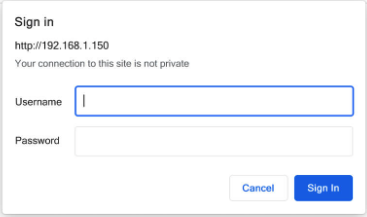So, you’ve just come across the IP address 192.168.1.150 and you’re probably thinking, “Okay… what now?” Don’t worry, I’ve got you. Whether you’re trying to tweak your Wi-Fi settings or just do some basic troubleshooting, logging into your router is step one—and it’s easier than you think.
What is 192.168.1.150?
First things first, 192.168.1.150 is a private IP address used inside local networks. It’s not something you type into Google expecting to go to a public website—it’s strictly for your home or office network. Routers from brands like Linksys, Netgear, TP-Link, or D-Link might assign this IP to your device or even use it as a gateway.
How to Login to 192.168.1.150
Here’s the simple step-by-step you need to follow:
- Open your browser
Doesn’t matter if it’s Chrome, Firefox, Safari—just pop it open. - Type in the IP address
In the address bar (not the search bar), type:
http://192.168.1.150
Then hit Enter. - Enter login credentials
You’ll be prompted to log in. If you haven’t changed them before, try one of these common combos:- Username:
admin
Password:admin - Username:
admin
Password:password
Not working? Flip your router upside down—it might be printed on a label.
- Username:

Can’t Access 192.168.1.150?
Yeah, it happens. Here are a few things to check:
- Are you connected to the router’s network?
Wi-Fi or Ethernet—it doesn’t matter, but you gotta be connected. - Typing error?
Make sure it’s not192.168.l.150(that’s a letter “L” instead of number “1”). - The IP might be different
If someone changed the default, you can find the correct IP by:- On Windows: Run
ipconfigin Command Prompt - On Mac: Go to System Preferences > Network > Advanced > TCP/IP
- On Windows: Run
Why Access Your Router Anyway?
Well, here’s where the real fun begins. Once you’re in, you can:
- Change your Wi-Fi name (SSID)
- Set a stronger password
- Manage connected devices
- Create guest networks
- Set up parental controls
Basically, you’re in control of your whole home network. Pretty cool, right?
Final Tips
- Always change default credentials – Seriously, don’t skip this.
- Don’t mess with settings you don’t understand – One wrong move could kill your connection.
- Keep your firmware updated – It’s like software updates for your router, and they matter!
Wrapping It Up
So that’s the deal with 192.168.1.150. Whether you’re just curious or trying to lock down your Wi-Fi, knowing how to log into your router gives you major power. It’s like finally having the keys to your own digital castle.